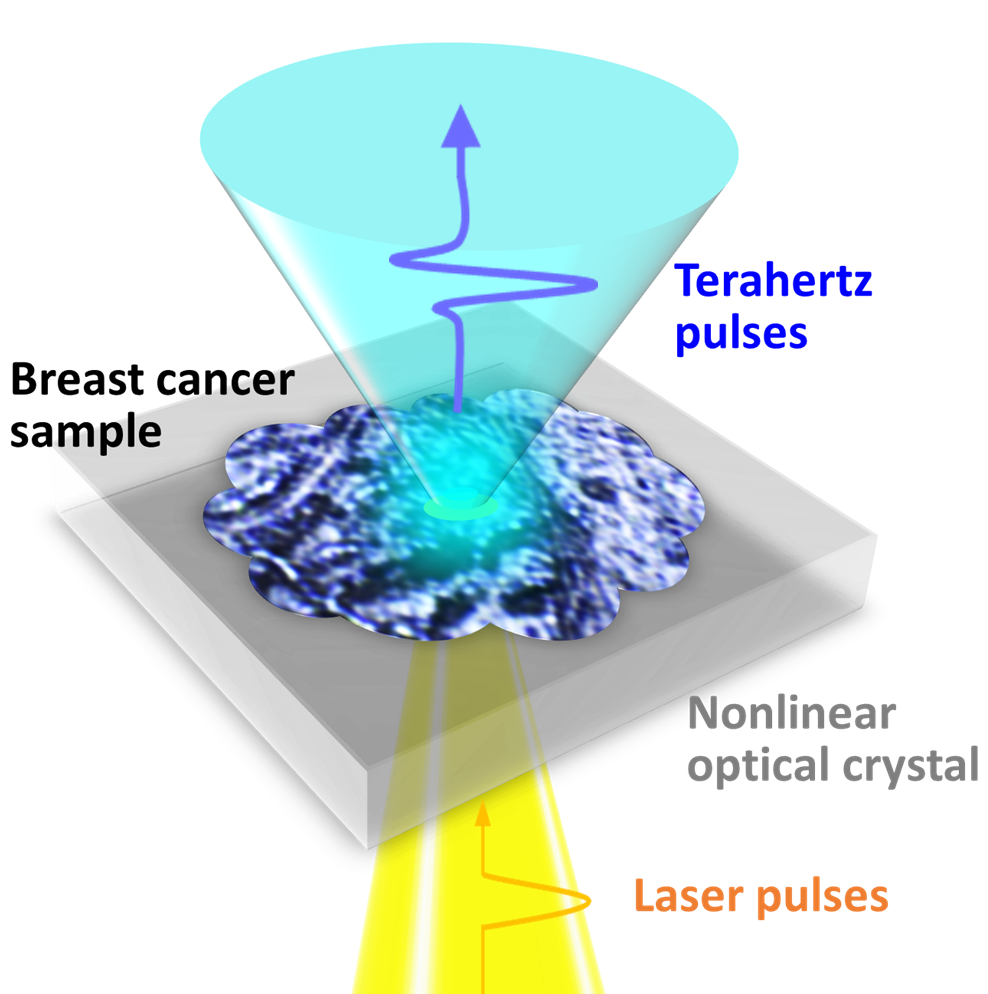
日本医療:0.5mm未満・早期乳がん:電磁波使い判別(動画):
Japan med: less than 0.5 mm, early breast cancer: electromagnetic waves:
日本医学:小于0.5毫米,早期乳腺癌:电磁波使用的鉴别
ー診断機器の開発、期待ー
大阪大学などのチーム:
阪大など、
「大きさ0・5ミリ未満の早期乳がんを、電磁波を使って鮮明な画像に映し出すこと」に成功した。
電磁波で鮮明な画像:
現在は、細胞を染色する必要がある。
診断まで数日かかっているが、早期の診断出来る可能性がある。
新しい診断機器の開発にもつながるという。
朝日新聞デジタル
https://www.asahi.com/articles/DA3S14672380.html
No stain? No sweat: Terahertz waves can image early-stage breast cancer without staining
2020-10-22
A team of researchers at Osaka University, in collaboration with the University of Bordeaux and the Bergonié Institute in France,
has succeeded in terahertz imaging of early-stage breast cancer less than 0.5 mm without staining, which is difficult to identify even by pathological diagnosis.
Their work provides a breakthrough towards rapid and precise on-site diagnosis of various types of cancer and accelerates the development of innovative terahertz diagnostic devices.
Breast cancer is roughly divided into two types: invasive and non-invasive.
The former,
invasive ductal carcinoma (IDC), begins in the cells of a breast duct, growing through the duct walls and into the surrounding breast tissue, potentially spreading to other parts of the body.
The latter,
ductal carcinoma in situ (DCIS), is an early-stage small breast cancer confined to the breast duct, but it can lead to invasive cancer. Therefore, early detection of DCIS is crucial.
For pathological diagnosis of cancer, the tissue sample is chemically stained, and a pathologist makes a diagnosis using an image of the stained tissue.
However, the staining process takes time, and it is difficult to distinguish DCIS from malignant IDC as they look nearly identical.
Terahertz imaging
can distinguish cancer tissue from normal tissue without staining and radiation exposure.
However, it was still difficult to identify an individual DCIS lesion (which typically range from 50 to 500 µm) by terahertz imaging due to its diffraction-limited spatial resolution of just several millimeters.
ResOU